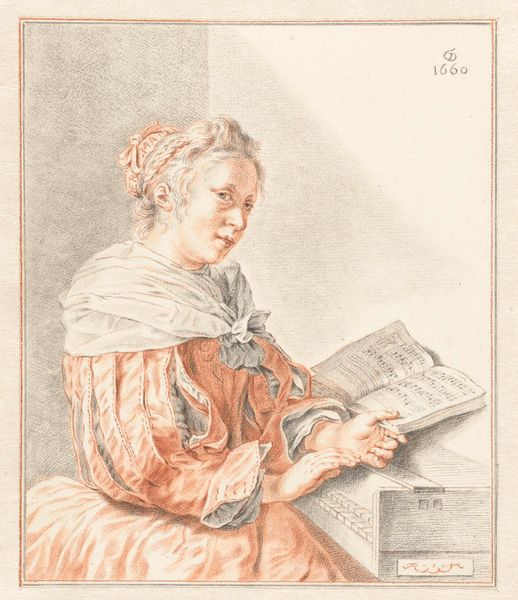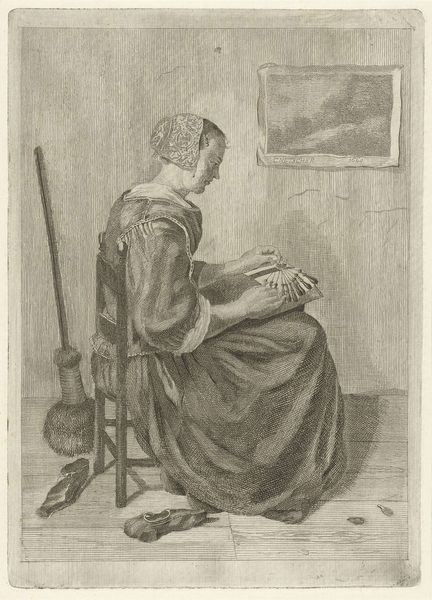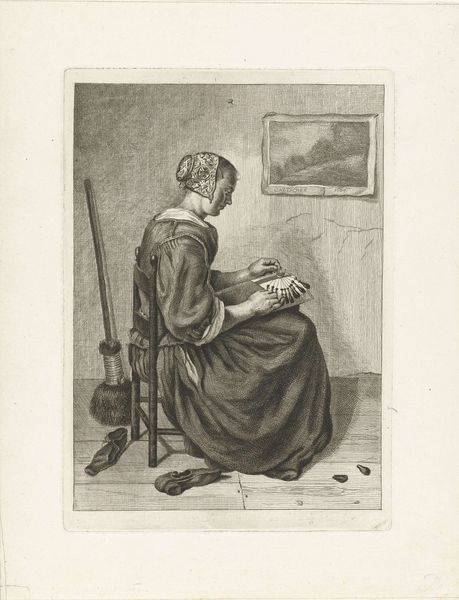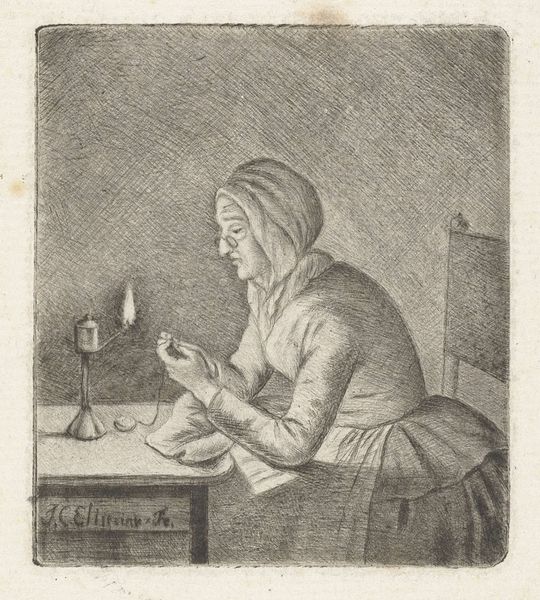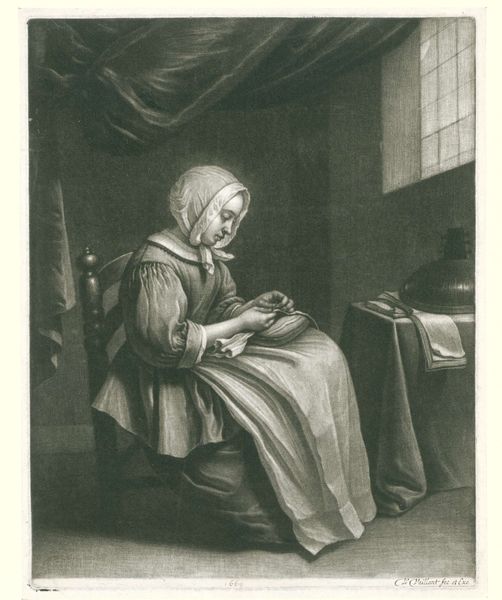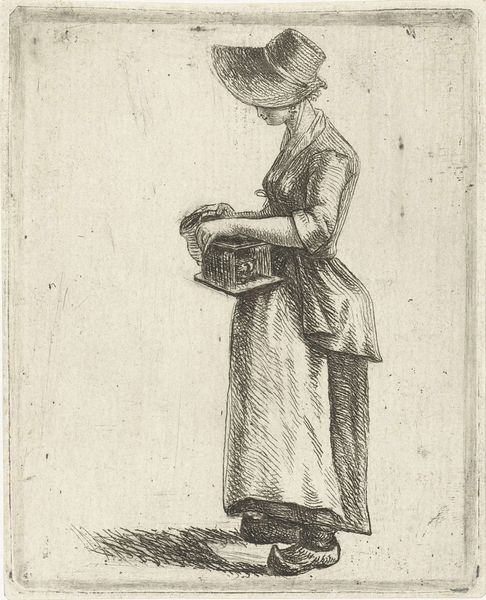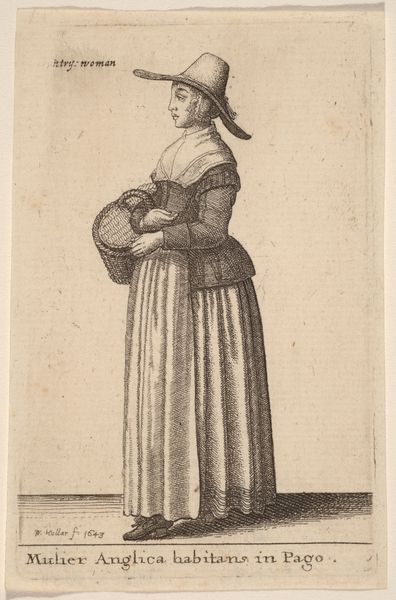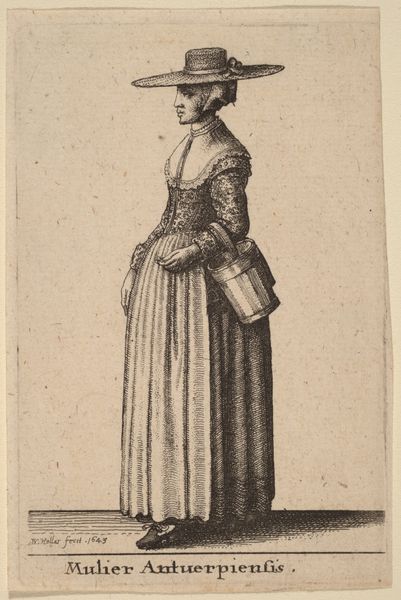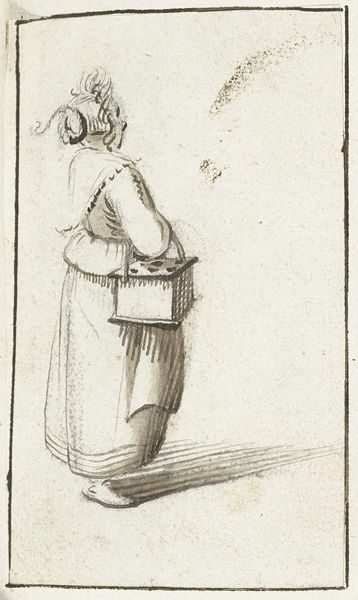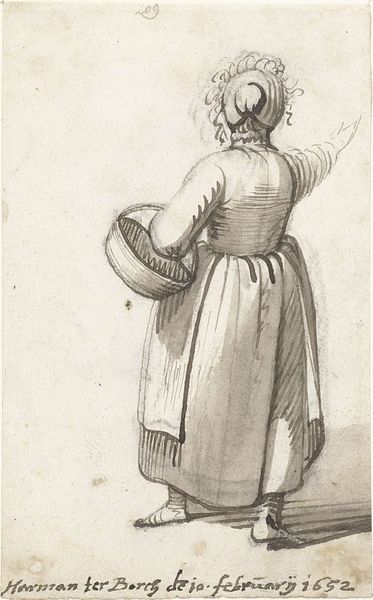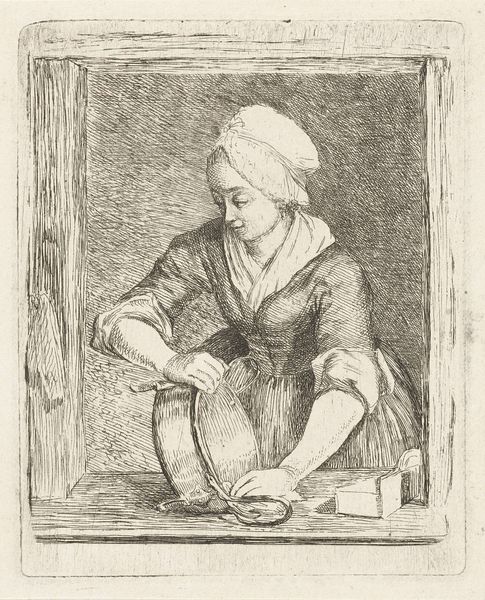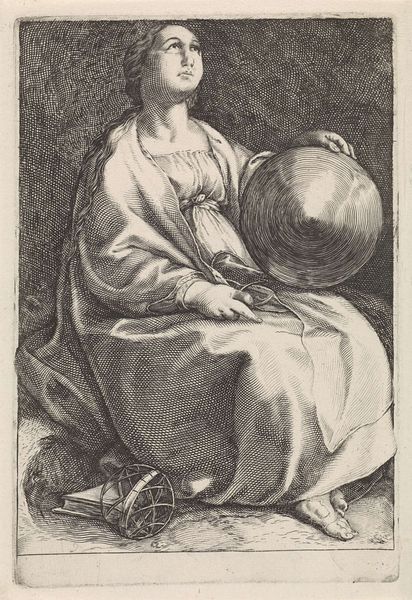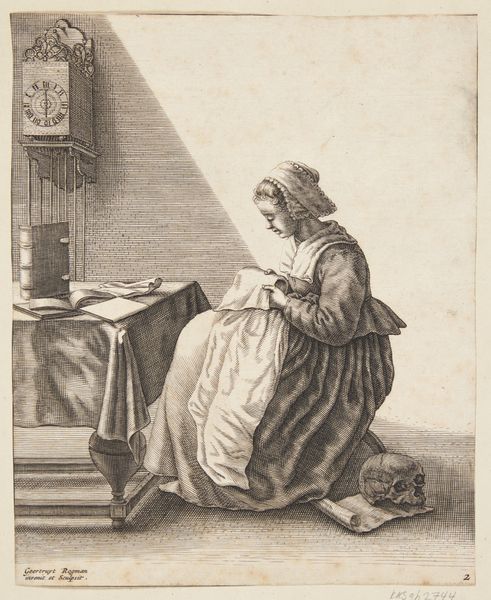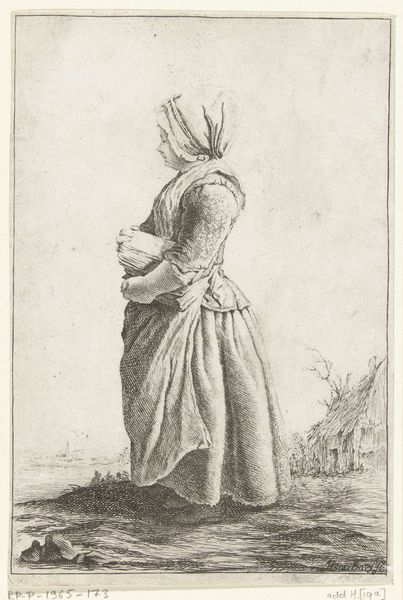
print, engraving
#
portrait
#
baroque
#
dutch-golden-age
# print
#
figuration
#
line
#
portrait drawing
#
genre-painting
#
engraving
Dimensions: height 88 mm, width 69 mm
Copyright: Rijks Museum: Open Domain
Curator: Let’s turn our attention to Wenceslaus Hollar’s engraving, "Kantwerkster," created in 1636. It resides here at the Rijksmuseum. What are your first thoughts? Editor: I'm immediately struck by the incredible detail he achieves with simple lines. The fabric of her dress practically shimmers, but the way he renders her labor is most impressive to me. It highlights this intersection of skill, material, and the work performed. Curator: Absolutely, there's an element of genre painting at play here—a scene from everyday life immortalized. The woman, poised and focused on her lacework, also signifies a very particular kind of labor. Lacemaking carried its own symbolic weight, of skill and patience. Notice how her very form seems to embody this delicate precision. Editor: Exactly! And lacemaking was not just a simple skill; it was often a crucial part of the Dutch economy, generating value and circulating wealth through the production and consumption of lace. This connects the personal scale depicted in the piece to the larger society in the Dutch Golden Age. How does her clothing play into her perceived class or role in society? Curator: It's fascinating because she's modestly dressed but not poorly. There’s a refined elegance in the ruff collar and the neatly arranged hair. Lace adorned such dress and marked a visual code to access wealth, status, and social roles in the period. These signifiers would certainly speak to its original audiences. This work tells a microhistory through its composition and subject. Editor: And considering this is an engraving, it makes you appreciate Hollar’s mastery over the technique and materials even more, considering the time required to produce an image in this form. Every choice of line represents careful decision-making. That reminds me about the rise of mercantilism. The work makes the act of crafting goods as being central to economic growth. Curator: Hollar’s choices provide a compelling visual representation of his time. I come away thinking about memory. It connects the artist to this subject centuries later. Editor: And it reveals how the meaning embedded in work evolves across historical periods and even today. The dialogue continues through this art.
Comments
No comments
Be the first to comment and join the conversation on the ultimate creative platform.
